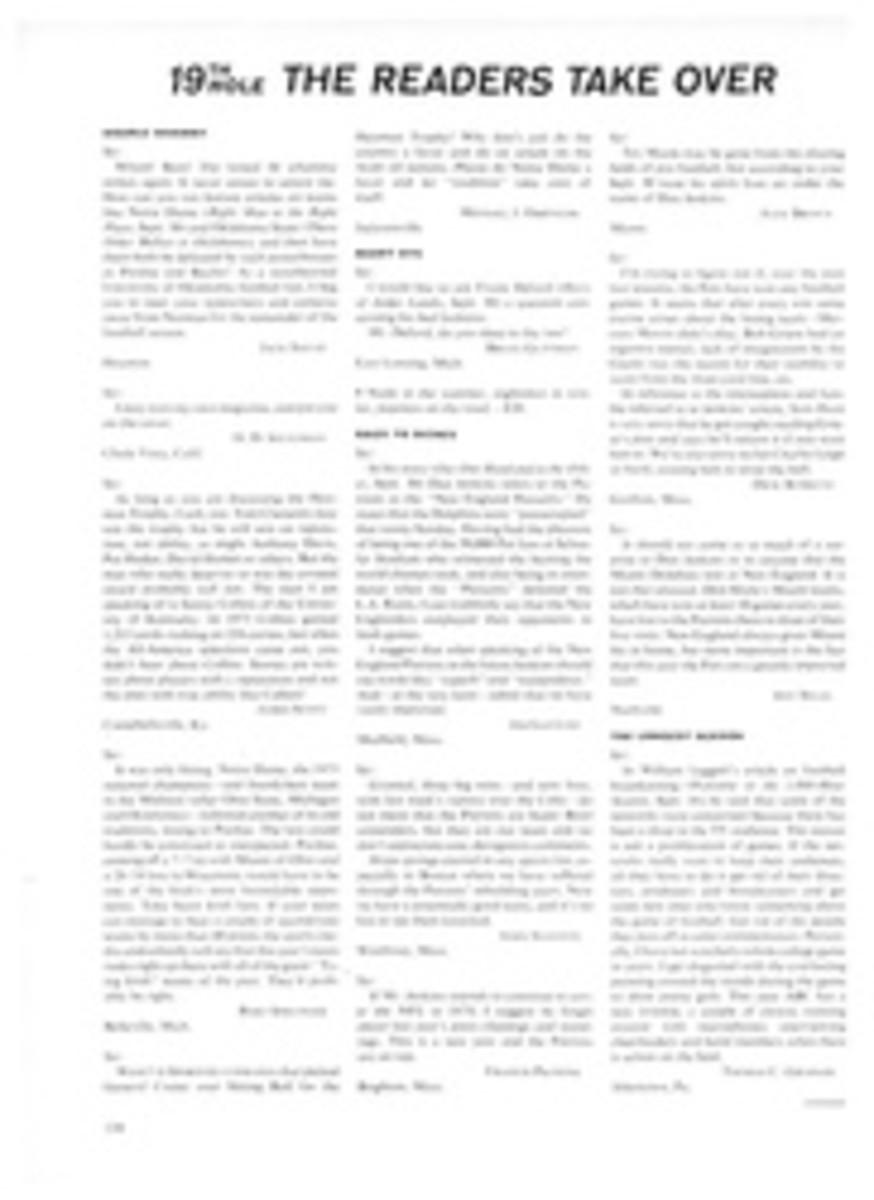
It Sure Was Hell on Wheels
It was as if the scorched earth had swallowed him whole that fateful day in May. For a long time no trace of his cycle could be found, much less the adventurous young man's body. As the mysterious silence continued, hope gradually gave way to resignation.
Exactly eight decades before motorcyclist Fred Mundy disappeared into the sandy wasteland of Baja California, not to return alive (SI, June 10), the subject of similar national anxiety was a 27-year-old bicyclist and amateur photographer named Frank G. Lenz.
The sport was in its infancy and Americans were eager for vicarious adventure. Thus, when Lenz quit his bookkeeping job in May of 1892 and announced his plan to cycle around the world, he became a national hero almost overnight.
Even he was amazed at the enthusiastic send-off given him in New York City on June 4, 1892. "No knight in the olden days...ever set out in search of adventures or donned his armor for foreign lands and deeds of high emprise with more fervid acclamations than those which have cheered my outward path," he wrote for Outing, the magazine that had agreed to sponsor his trip and publish the account.
Although only 25 at the time, Frank Lenz had been cycling long distances for nearly a decade. The first 3,000 miles, therefore, were no problem. Heading north to Albany, Lenz swung west to Buffalo, following the line of the Erie Canal "up the valley of the Mohawk, the cradle of the military forces of the Revolution and the grave of the military hopes of the British." From Buffalo to Minneapolis he traveled across Canada, then followed the track of the Northern Pacific Railroad to Spokane Falls and the telegraph route to San Francisco, which he reached on Oct. 20, 1892. Along the way, delegates of every cycling club within 20 miles of his route turned out to wine him and dine him.
Boarding the steamer Oceanic, Lenz sailed on Oct. 25 for Yokohama to become, by Christmas 1892, the "first cyclist ever to invade northern China." Although he was basically a genial young man, he displayed a contempt for Orientals, and he was especially scornful of those Chinese who visited shops to smoke a pipeful of opium.
In turn, Lenz was called "foreign devil" and followed by surly crowds. His antipathy to the Chinese was further increased when he discovered that his tool bag, which had contained a monkey wrench, screwdriver and oilcan, had been rifled. "Almost distractedly, I pointed to the empty tool-pouch," he wrote. "But the following crowd shook their heads 'no,' insisted that I should ride, and began throwing stones at a distance. Presently they became bolder and came on closer, and one stone struck me on the leg. Things were getting uncomfortable; my wheel clogged up with mud and snow...and I could not get away. Drawing my revolver, I flourished it about, but they only gave fiendish yells and came closer. Dropping the wheel in the snow I gave chase and fired three times in the air. The crowd of thirty or forty ran as fast as their legs would carry them."
For the next 15 months Frank Lenz continued his slow journey across Asia on the muddy roads of Burma, India, Baluchistan and Persia. He dutifully described the architecture, countryside and culture in the manner of the typical 19th century travel writer—with his own mixture of condescension, textbook erudition and a smattering of weak humor. By the time he reached Teheran, however, a certain poignancy had crept into his prose. "I must confess to a feeling of homesickness," he wrote. "I am tired, very tired, of being a 'stranger.' "
On May 2, 1894 his last piece of correspondence was dispatched from Tabriz, Persia. "I leave today," he wrote, "on my way to Constantinople, now only 900 miles distant." And with those words, Frank Lenz disappeared for all time.
Because his accounts had been appearing in print on a considerably delayed basis, the general public did not know for some time that no news had been received from Lenz after May 2, 1894. Gradually, however, word leaked out that something was wrong, that he had "been delayed" or "obstructed near the Persian-Turkish border." Finally, veteran cyclist William Sachtleben made an alarming announcement: "I think Lenz must have been murdered," he told reporters. "As near as I can learn, he disappeared in the Delibaba Pass between Erzurum and Bayezid.... This Delibaba Pass is one of the worst places in Asiatic Turkey, and it is my belief that Lenz was murdered."
J. H. Worman, the editor of Outing, replied heatedly that "the vague rumors circulating through the press are sent by those seeking to advertise themselves al the expense of Frank G. Lenz and his friends."
Unfortunately, Sachtleben was almost assuredly correct. A detailed investigation proved that Lenz had spent the night of May 9 at the Turkish village of Tchelkani and then had headed north toward the hamlets of Muserstie and Shamian—an area, according to R. W. Graves, British Consul at Erzurum, "infested with brigands." Another story suggested that Lenz had been killed out of a certain fear, rather than greed. "An argument arose as to whether he was a man or a devil." recounted one native, who had never seen a bicycle and referred to it as a "two-wheeled carriage." In order to settle the controversy, he explained, several shots had been fired at the strangely moving creature, which was killed immediately.
At any rate, in May of 1894 a body was found in the River Sherian, about a mile and a half from Tchelkani, improbably equipped with a large hand mirror. At about the same time a particularly ferocious Kurdish tribesman began sporting narrow saddle girths on his horse, which suspiciously resembled flattened bicycle tires.
Convinced at last, the publishers of Outing swore vengeance on the perpetrators of the presumed outrage and provided a spectacular eulogy for their erstwhile correspondent. But because they had an ample supply of his columns still on hand, the words of Frank Lenz continued to appear in the magazine, as if he were alive, until the issue of July 1896.
At this point, Outing's coverage of round-the-world cycling endeavors was turned over to "a gentleman who made it awheel recently under more favorable circumstances than those which," as the magazine put it, "embarrassed Lenz on his fateful venture."

